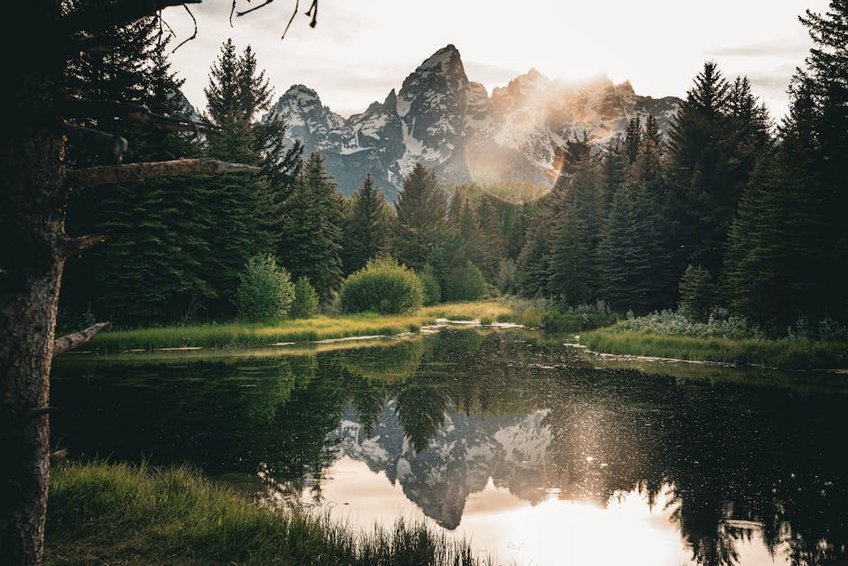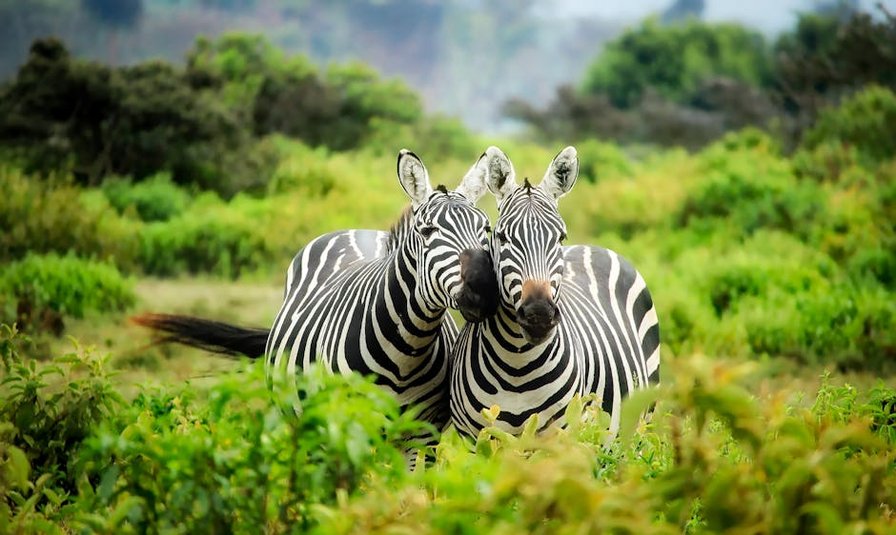Gambia Abuko Nature Reserve: West Africa’s Wildlife Sanctuary
Gambia Abuko Nature Reserve offers an accessible tropical wildlife experience just 25 kilometers from Banjul, protecting 259 acres of gallery forest and savanna habitats since 1968. This sanctuary shelters over 270 bird species alongside primates, reptiles, and rare mammals within walking trails suitable for all fitness levels. Your visit supports vital conservation programs while providing intimate wildlife encounters without extensive travel requirements.
Essential Information About Abuko
Abuko Nature Reserve functions as The Gambia’s oldest protected area, established through community advocacy after a British official recognized its ecological significance. The reserve’s compact size belies its biodiversity, containing distinct ecosystems from dense forest corridors to open grasslands within manageable exploration distances. Conservation efforts here directly benefit local communities through employment and environmental education initiatives.
History and Conservation Significance
Abuko’s protection began accidentally when a fence erected around a water collection point revealed thriving wildlife populations.
- Official reserve status came in 1968 following ornithologist Edward Potter’s advocacy, making it The Gambia’s first protected area and a model for West African conservation.
- The reserve maintains breeding programs for endangered species like the Nile crocodile and patas monkey, with successful reintroductions to other Gambian protected areas.
- Community involvement includes training local guides and funding schools through entrance fees, creating sustainable tourism benefits beyond wildlife protection.
- Budget independent travel costs $25-40 daily, including $5 reserve entrance, $10-15 shared taxi transportation, and $10-20 guesthouse lodging near the reserve entrance.
- Mid-range experiences at $50-80 per day cover $20 guided tours, $30-50 hotel accommodations with breakfast, and rental car transportation at $25 daily for greater flexibility.
- Luxury packages from $100-150 daily include private guided drives, premium hotels with pools, and multi-reserve itineraries with professional photography guidance and meal inclusions.
- Gambia Tourism Board
- BirdLife International
Wildlife and Biodiversity
Abuko’s biodiversity stems from its perennial stream creating microhabitats within The Gambia’s generally arid landscape. This water source supports forest species typically found much further south in Africa, including three monkey species and the elusive sitatunga antelope. Bird diversity peaks during November-April European winter, when migrants join resident species along the forest trails.
Reptile enthusiasts find dedicated observation areas for crocodiles and monitor lizards, while butterfly diversity exceeds 100 species throughout the year. The reserve’s education center displays smaller species and provides context for understanding the ecosystem relationships you’ll encounter on the trails.
Location and Physical Characteristics
Located in the Western Division near Lamin village, the reserve spans 105 hectares with clearly marked trails totaling approximately 3 kilometers. Elevation remains minimal throughout the flat terrain, with the Abuko River creating natural boundaries and watering holes. The compact layout ensures visitors can experience multiple habitats within a two to three hour walking circuit.
Planning Your Gambia Abuko Nature Reserve Experience
Your Gambia Abuko Nature Reserve visit requires minimal advance planning compared to larger African parks, with year-round accessibility and straightforward logistics. Morning arrivals between 8-10 AM maximize wildlife activity during cooler temperatures of 75-85°F (24-29°C), while afternoon visits often have fewer visitors. Combine your trip with other Gambian attractions like the Makasutu Culture Forest for a comprehensive West African nature experience.
Best Time to Visit Abuko Nature Reserve
November through February provides optimal conditions with temperatures between 70-85°F (21-29°C) and minimal rainfall below 1 inch monthly. These cooler dry season months coincide with European bird migration, increasing species counts while maintaining comfortable hiking conditions. March to June becomes progressively hotter, reaching 95°F (35°C), but offers lush vegetation and newborn wildlife sightings.
The rainy season from July to October sees higher humidity and afternoon showers, though mornings often remain clear for wildlife viewing. This period offers the lowest visitor numbers and dramatic storm photography opportunities, despite some trails becoming muddy. Bird populations remain strong year-round, making any season viable for dedicated birdwatchers.
Budget Planning and Costs
Budget considerations vary significantly based on accommodation choices and tour preferences.
Essential Preparation Checklist
Pack lightweight neutral-colored clothing, sturdy walking shoes, and rain protection regardless of season for variable trail conditions. Essential gear includes binoculars for wildlife spotting, refillable water bottles, and high-SPF sunscreen for protection during extended trail walks. Photography equipment should include zoom lenses for bird photography and protective cases for humidity considerations.
Documentation requires your passport for identification, though no special permits beyond the entrance fee are needed for most visitors. Health preparations include malaria prophylaxis recommended for The Gambia and basic first aid supplies for minor trail incidents. Book accommodations至少 two weeks ahead for peak season visits between December and February.

Alt: “abuko-nature-reserve-forest-trail-wildlife-habitat”
Top Attractions and Activities
Abuko’s primary attraction remains its accessibility to diverse African wildlife within a manageable protected area easily visited from coastal resorts. The well-maintained trail system circles through changing habitats where visitors might spot monkeys minutes after observing crocodiles at the watering holes. Educational signage enhances the experience with information about species behaviors and conservation importance throughout the walking circuit.
Must-See Highlights
The crocodile pool near the entrance provides reliable sightings of Nile crocodiles basking on the banks, with safe viewing platforms and informative guides available. Further along the trails, the observation hides overlooking water holes frequently reveal antelope species and abundant bird activity during morning hours. The education center displays smaller reptiles and provides context about the reserve’s ecological significance within The Gambia.
Bird watching reaches exceptional levels along the riverine forest sections, where colorful species like the violet turaco and blue-breasted kingfisher appear regularly. Mammal enthusiasts should watch the forest canopy for red colobus monkeys and the grasslands for patas monkeys, both species thriving within the protected environment. These concentrated wildlife areas make Abuko ideal for travelers with limited time seeking authentic African encounters.
Hidden Gems and Local Favorites
The less-visited northern trails often yield sightings of the rare sitatunga antelope, a semi-aquatic species particularly well-adapted to the reserve’s wetland areas. Local guides know specific fruiting trees that attract photography-friendly primate groups during late afternoon feeding sessions. These insider access points provide more intimate wildlife experiences away from the main visitor flow.
Early morning visits before 8 AM frequently reveal nocturnal species completing their activities, including genets and various owl species rarely seen during busier hours. The reserve’s butterfly garden near the education center showcases West Africa’s incredible insect diversity in a controlled environment perfect for macro photography. Visiting during weekdays typically means fewer visitors and more personalized wildlife encounters throughout the trail system.
Bird Watching and Photography Opportunities
Abuko ranks among West Africa’s premier birding destinations with specialized habitats compact enough to yield high species counts within single visits. The gallery forest areas support forest specialists like the ahanta francolin, while open areas attract raptors and seasonal migrants from Europe. Photography hides positioned near water sources provide ideal conditions for capturing wildlife behavior without disturbance.
Professional guides available at the entrance know specific territories for sought-after species and can position visitors for optimal lighting conditions. The dry season months offer better visibility through thinner vegetation, though the green backdrop of rainy season creates different photographic opportunities. Prime photography hours occur during early morning and late afternoon when animal activity peaks in softer light conditions.
Practical Travel Information
Reaching Abuko Nature Reserve proves straightforward from most Gambian tourist areas, with multiple transportation options available regardless of budget constraints. Most visitors arrive from coastal resort areas like Kotu and Kololi, with journey times under one hour via various transport methods. The reserve’s proximity to Banjul International Airport makes it feasible as a first or last stop during Gambian itineraries.
| Category | Options/Features | Price Range (USD) |
|---|---|---|
| Accommodation | Lodge near reserve, hotel in coastal area, guesthouse in Lamin village with varying amenities | $15-120 |
| Transportation | Shared taxi, private hire, rental car, organized tour with pickup services included | $5-50 |
| Tour Services | Independent visit, guided walk, photography tour, combination packages with other reserves | $5-75 |
| Additional Costs | Entrance fees, camera permits, guide tips, refreshments, conservation donations | $5-25 |


